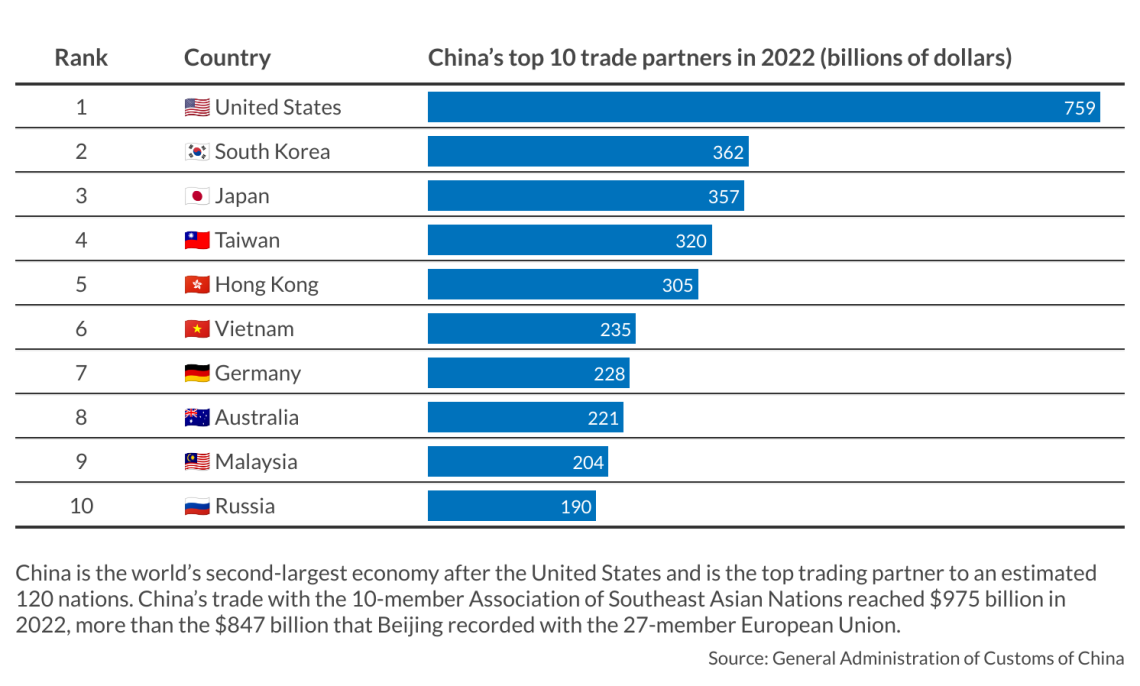The implications of America’s anti-China tech moves
The United States still has no consensus on China policy, so it combines get-tough sanctions for security reasons, competition for economic ones and selective cooperation.

In a nutshell
- China and the United States are likely to disentangle tech bases and supply chains
- Beijing’s dominance in solar makes it difficult for the U.S. to go it alone in energy
- The U.S. will likely not disengage before the 2024 elections for economic reasons
Efforts to ban the digital app TikTok, owned by the Chinese internet company ByteDance, have become the poster child of the debate in the United States over advancing U.S. innovation, research, development and technology markets, while mitigating security and economic concerns over products, services and supply chains linked to Beijing. Whether a ban is adopted or not, the momentum to restrict Chinese technologies will not abate and will be a centerpiece in coming debates over U.S. security, economic and industrial policy.
Politics and policy
Confronting the threat of China enjoys a high degree of bipartisan support even as Republicans and Democrats sharpen their differences ahead of the national elections in 2024.
Yet there still is no consensus on China policy. Congressional action is noteworthy. While significant legislation such as the CHIPS Act has been enacted, the number of pending measures is much bigger. In large part, Congress is more focused on the message than on turning bills into laws.
There is widespread recognition that Chinese technologies represent economic and security concerns. Strong, rapid, decisive efforts by the U.S. government to ban Huawei’s technologies and services in America – and to encourage allies to do the same – are evidence of Washington’s resolve.
A recently established oversight committee in the U.S. House of Representatives has signaled it will address Chinese tech issues. Initially criticized by the administration as a partisan move by the Republican-controlled House, the committee seems to have bipartisan interests. That said, conflicting influences cloud the trajectory of U.S. policy.
While anti-China sentiment grows in the U.S., the Biden administration is more interested in balancing the relationship.
There is no consensus within the two major parties, let alone a bipartisan agreement, on balancing government and private sector roles in addressing security concerns. While there is more interest in countering threats, there is also growing distrust over collusion between the government and the tech industry, largely regarding concerns over censoring conservative online speech. Some critics also complained that the CHIPS Act was a giveaway to tech companies rather than a strong response to China. They argued, for example, that companies could accept government incentives and still engage in cooperative ventures with Chinese state-owned enterprises.
While anti-China sentiment grows in the U.S., the Biden administration is more interested in balancing the relationship. The administration’s guiding doctrine can be described as “compete where we must but cooperate where we can.” On the one hand, the administration has already rolled out some regulations and executive orders to address the China challenge and championed the CHIPS Act. “Given the foundational nature of certain technologies, such as advanced logic and memory chips, we must maintain as large of a lead as possible,” Mr. Biden’s national security advisor, Jake Sullivan, was quoted recently in a special report by Politico.
Among these efforts are attempts to prevent companies in the U.S. and overseas from selling advanced chips to China or supplying Chinese firms with the technology to produce advanced chips. In addition, the administration also recently demanded that ByteDance sell TikTok, or the president would support its complete ban in the U.S. On the other hand, the administration continues to seek cooperation with China in addressing climate change.
Facts & figures
Chinese activity
The Chinese regime maintains an extensive lobbying effort in the U.S. at the national, state and local levels. In addition, it continues to attempt to influence public attitudes. TikTok, for instance, recently launched an ad campaign stressing the value of TikTok to Americans, including promoting a content creator who uses the app to help teach children to learn how to read.
The U.S. continues to promote cooperative efforts to work with allies. Mr. Biden, for instance, built on Trump’s Clean Network Initiative to limit the use of Chinese technologies by partners. These efforts, however, run counter to concerns over the Inflation Reduction Act, which some U.S. allies worry favors American companies over international partners.
The U.S. recognizes that China has dramatically increased its efforts to influence international agencies, particularly on tech issues. Washington, for example, led an international effort to block the election of a Chinese candidate to the head of the World Intellectual Property Organization. Yet, the Biden administration also seeks to promote cooperation in international organizations, often ignoring aggressive Chinese behavior.
The administration faces pressure to improve the economy, avoid a deep recession and curb inflation going into the national elections in 2024. Disengaging from China could create short-term economic disruption that would slow rather than spur growth. In addition, there are concerns that, while China acquires U.S. intellectual property and tech innovation, the U.S. also gains from joint research and development with Chinese companies and universities.
The administration is dogged by accusations of collusion with and successful influence from the Chinese regime, principally related to the business dealings of Hunter Biden, the president’s son. Though the administration has initiated “tough on China” policies, these claims persist and are growing. They will continue through the national elections in 2024.
More on China
China’s future under Xiconomics
U.S.-China flash points
Rather than a comprehensive tech policy, the U.S. is likely to be driven by various issues, including the Chinese regime’s response to American actions and China’s own desire to have a more independent, resilient and dominant tech sector (such as pursuing a robust capacity for Chinese manufacturing advanced chips).
Energy: No area of tech policy is more vexing for the U.S. than the energy sector. The administration seeks to accelerate the transition to green energy while recognizing this effort increases U.S. dependencies on Chinese-dominated supply chains. China has produced most of the world’s solar panels since 2008.
Artificial intelligence: The U.S. sees itself in direct competition with China over the development and adaption of advanced AI technology. That said, many American companies are engaged in joint research and development with Chinese companies and universities.
Quantum computing: The U.S. keenly feels competition with China over the race to develop and deploy next-generation quantum computing hardware and software.
Virtual technology: Virtual technology is more than cloud computing or video games; it represents a family of technologies that create virtual representations in digital and physical spaces. Virtual technology is already deployed in many fields from education to military training to surgical practices.
Blockchain: This technology is often thought to be synonymous with cryptocurrency, but the use of distributed secure information for recording and managing digital transactions has many applications. Just some of these include supply-chain management and logistics, as well as intellectual property management, food safety, healthcare data management and financial investing.
Scenarios
The most likely scenario is continued and accelerating efforts to disentangle U.S. and Chinese tech bases and supply chains. This will not just be the result of U.S. initiative. China is also interested in developing an independent and resilient technology base.
Expect China to keep pushing back against efforts to limit the use of its products and services, and to resist restrictions on cooperative research and development. At the same time, Beijing is likely to emphasize its prominence in technology and encourage dependence on Chinese supply chains.









